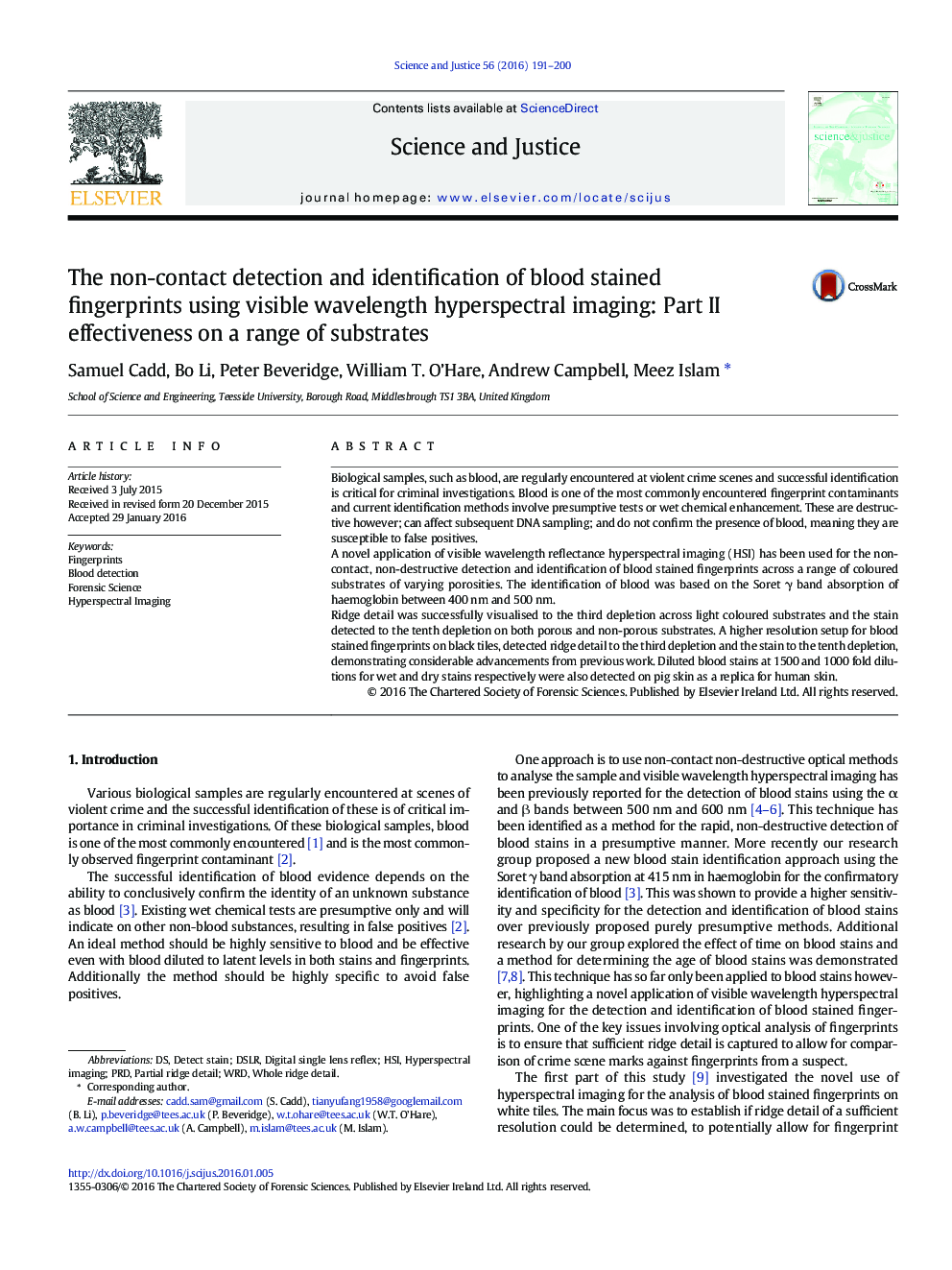| Article ID | Journal | Published Year | Pages | File Type |
|---|---|---|---|---|
| 106870 | Science & Justice | 2016 | 10 Pages |
•Current blood detection methods are destructive and can generate false positives.•Novel application of visible wavelength reflectance hyperspectral imaging•Identification of blood stained fingerprints across wide range of substrates•Successful visualisation of ridge detail on black ceramic tiles•Successful detection of wet and dry blood stains on pig skin
Biological samples, such as blood, are regularly encountered at violent crime scenes and successful identification is critical for criminal investigations. Blood is one of the most commonly encountered fingerprint contaminants and current identification methods involve presumptive tests or wet chemical enhancement. These are destructive however; can affect subsequent DNA sampling; and do not confirm the presence of blood, meaning they are susceptible to false positives.A novel application of visible wavelength reflectance hyperspectral imaging (HSI) has been used for the non-contact, non-destructive detection and identification of blood stained fingerprints across a range of coloured substrates of varying porosities. The identification of blood was based on the Soret γ band absorption of haemoglobin between 400 nm and 500 nm.Ridge detail was successfully visualised to the third depletion across light coloured substrates and the stain detected to the tenth depletion on both porous and non-porous substrates. A higher resolution setup for blood stained fingerprints on black tiles, detected ridge detail to the third depletion and the stain to the tenth depletion, demonstrating considerable advancements from previous work. Diluted blood stains at 1500 and 1000 fold dilutions for wet and dry stains respectively were also detected on pig skin as a replica for human skin.
